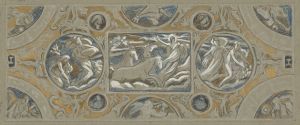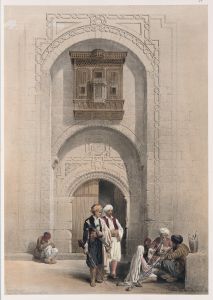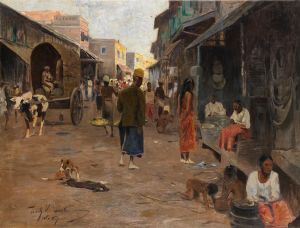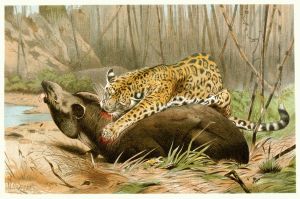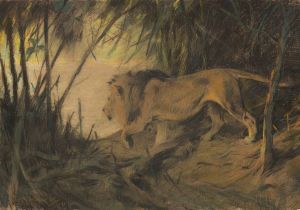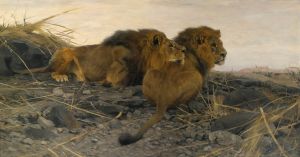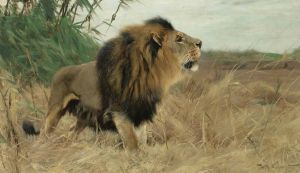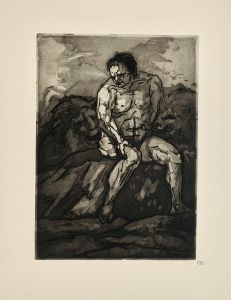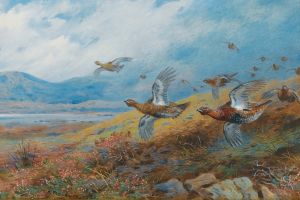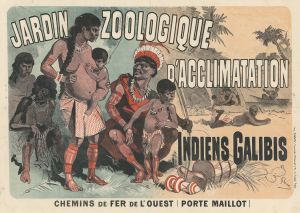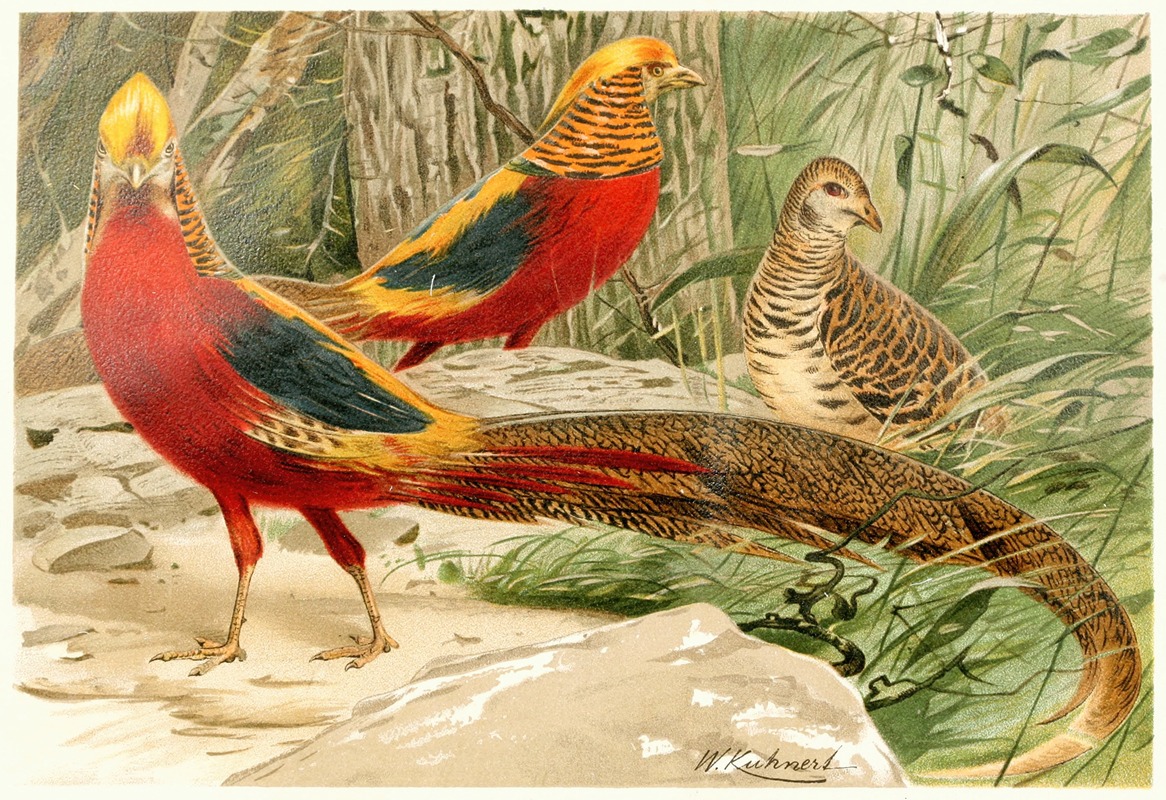
Golden Pheasants
A hand-painted replica of Wilhelm Kuhnert’s masterpiece Golden Pheasants, meticulously crafted by professional artists to capture the true essence of the original. Each piece is created with museum-quality canvas and rare mineral pigments, carefully painted by experienced artists with delicate brushstrokes and rich, layered colors to perfectly recreate the texture of the original artwork. Unlike machine-printed reproductions, this hand-painted version brings the painting to life, infused with the artist’s emotions and skill in every stroke. Whether for personal collection or home decoration, it instantly elevates the artistic atmosphere of any space.
Wilhelm Kuhnert (1865–1926) was a renowned German painter and illustrator, celebrated for his detailed and realistic depictions of wildlife. His work is particularly noted for its focus on African animals, but he also painted a variety of other species, including birds. One of his notable works is "Golden Pheasants," which exemplifies his skill in capturing the essence and beauty of wildlife.
"Golden Pheasants" is a painting that showcases Kuhnert's ability to portray animals with lifelike precision and vibrant colors. The golden pheasant, known for its striking appearance, is native to the forests of western China. It is characterized by its bright plumage, with males displaying a golden-yellow crest, red body, and multicolored back. Kuhnert's painting captures these features with meticulous attention to detail, highlighting the bird's vivid colors and elegant form.
Kuhnert's approach to wildlife art was influenced by his extensive travels and firsthand observations of animals in their natural habitats. Although he is best known for his African scenes, his interest in diverse species is evident in works like "Golden Pheasants." His ability to render animals with anatomical accuracy and dynamic poses is a testament to his dedication to studying his subjects closely.
The painting reflects the broader context of Kuhnert's career during a time when wildlife art was gaining popularity. The late 19th and early 20th centuries saw a growing interest in natural history and exploration, with artists like Kuhnert playing a crucial role in bringing the wonders of the natural world to a wider audience. His works were not only appreciated for their artistic merit but also valued for their educational content, providing insights into the appearance and behavior of various species.
Kuhnert's technique involved a combination of field sketches and studio work. He often traveled to remote locations to observe animals in their environments, making detailed sketches and notes. These field studies served as the foundation for his studio paintings, where he would refine and complete his compositions. This method allowed him to capture the essence of his subjects with authenticity and vitality.
"Golden Pheasants" is an example of Kuhnert's ability to blend scientific observation with artistic expression. The painting not only depicts the physical characteristics of the pheasants but also conveys a sense of their natural grace and beauty. Kuhnert's work continues to be celebrated for its contribution to wildlife art and its role in fostering an appreciation for the diversity of the animal kingdom.
In summary, "Golden Pheasants" by Wilhelm Kuhnert is a testament to the artist's skill in portraying wildlife with accuracy and artistry. Through his detailed depiction of the golden pheasant, Kuhnert captures the vibrant beauty of this species, reflecting his broader commitment to bringing the natural world to life through his art. His legacy endures in the continued admiration of his works, which remain a valuable part of the history of wildlife painting.





